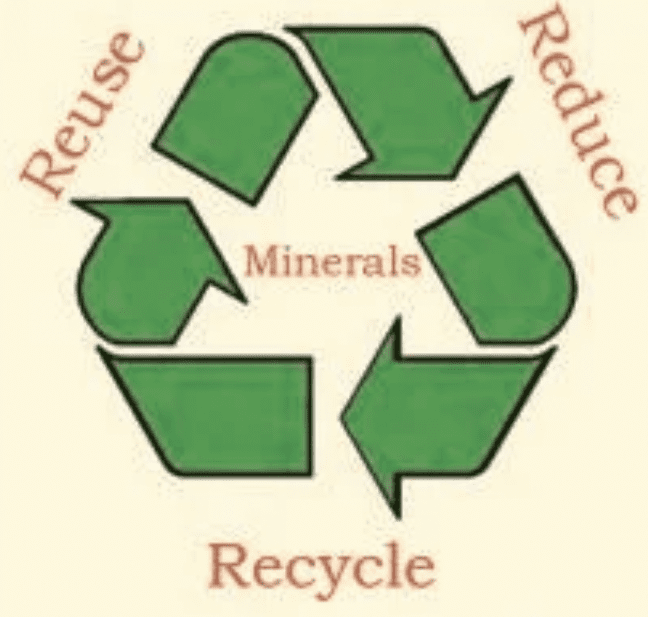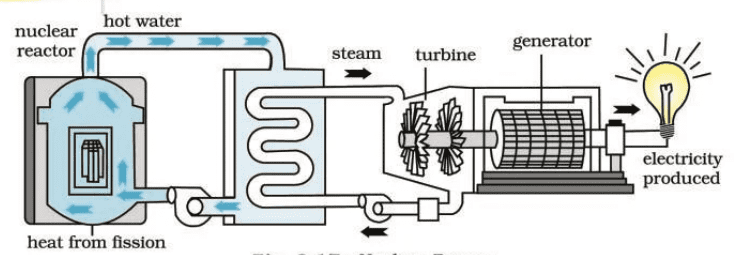Minerals And Power Resources class 9
In this lesson minerals and power resources. A naturally occurring substance is a mineral with a definite chemical composition.
Minerals not evenly distributed in space. They concentrated in a specific area or rock formations.
Some minerals found in inaccessible areas. Such as the Arctic Ocean bed and Antarctica.
Minerals formed in different types of geological environments, under different conditions.
They made by natural processes without human intervention. They can identified based on their physical properties. such as color, density, hardness and solubility.
Types Of Minerals
More than three thousand different minerals. Based on the composition, the minerals are classified as metallic and non-metallic minerals.

Metal ores contain metal in its original form. Metals also hard materials that conduct heat and electricity and have a characteristics lustrous. Iron ore, bauxite, manganese ore are some examples.
Metal ores may be ferrous or non-ferrous. Iron is found in iron ores such as iron, manganese and chromites. The non-ferrous mineral also does not contain iron but may contain some other metals such as gold, silver, copper or lead.
Non-metallic minerals do not contain metals. Examples of minerals such as lime, mica and gypsum. Mineral fuels such as coal and petroleum are also non-metallic minerals.

Mining is the process to take minerals from the rocks buried under earth surface. The minerals under shallow depth taken out by removing the surface layer also known as open cast mining.
Deep bores called shafts, have to made rich mineral which leads to great depth. This is shaft mining. As well as Deep well are made to take petroleum out and called as drilling. The minerals which lie near the surface iss taken out by the process quarrying.
How the minerals are distributed?
Metallic minerals found in igneous and metamorphic rock formations that form large plateaus. Iron ore, copper and nickel in northern Sweden examples of minerals found in igneous and metamorphic rocks.
The sedimentary rock formations of the plains and young fold mountains contain metallic minerals such as lime.
Some examples the limestone deposits of the Caucasus region of France, the manganese deposits of Georgia and Ukraine, and the phosphate beds of Algeria. Mineral fuels such as coal and petroleum found in sedimentary rocks.
Asia
Large ion ores deposited by India and china.China, malaysia and Indonesia world’s largest tin producers. China lead production of lead , antimony and tungsten. Asia also deposits nickel, manganese, zinc and copper.
Europe
Leading producer of iron ore in the world is Europe. And also Russia, Ukraine, Sweden and France countries who deposits large amount of ion ore. Nickel, manganese, zinc and copper are deposited by Europe and European Russia.
North America
The deposits of minerals in North America done by Canadian region north of the major lakes, the Appalachian region and the mountain ranges to the west. Also Iron ore, nickel, gold, uranium and copper cut in the Canadian Shield region.
Some More Countries minerals and power resources
South America
Brazil is the largest producer of high quality iron ore in the world. Chile and Peru leading in copper production. Brazil and Bolivia is one of the largest tin producers in the world. South America also has large deposits of gold, silver, zinc, chromium, manganese, bauxite, mica, platinum, asbestos and diamonds. The mineral oil found in Venezuela, Argentina, Chile, Peru and Colombia.
Africa
Africa is rich in mineral resources. Also, It is the world’s largest producer of diamonds, gold and platinum. South Africa, Zimbabwe and Zaire produce most of the world’s gold. Other minerals found in Africa are copper, iron ore, chromium, uranium, cobalt and bauxite. Oil is available in Nigeria, Libya and Angola.
Australia
Is the largest producer of bauxite in the world. It is also a leader in the production of gold, diamonds, iron ore, tin and nickel. It is also rich in copper, lead, zinc and manganese. Large deposits of gold in the Calcutta and Coolcardi regions of Western Australia.
Antartica
It is well known enough to predict the presence of Antarctica’s geographically diverse mineral deposits, some large. It is also Significant coal deposits have been predicted in the Transantarctic Mountains and the Iron Age near Mount Prince Charles in eastern Antarctica. Iron ore, gold, silver and oil also commercially available.
Conservation Of Minerals
It has been thousands of years since minerals were formed and concentrated. The rate of formation is much lower than the rate at which these minerals consumed by humans. It is necessary to reduce wastage in the mine. Recycling metals is another way to conserve mineral resources.

Power Resources
Power or energy plays an important role in our lives. We also need energy for industry, agriculture, transportation, communications and security. Energy resources can be broadly classified.
Conventional sources
Conventional energy sources have been in common use for a long time. Firewood and fossil fuels are the two main sources of genetic energy.
Firewood
The remains of animals buried underground for millions of years converted into fossil fuels by heat and pressure.
Fossil fuels such as coal, petroleum and natural gas are the main sources of conventional energy. More than 50% of people in villages are using fire wood for cooking. Still now all village members are using firewood for their food.
Coal
Also used domestic fuel and to make iron and steel, steam engines and electricity. The electricity coming from coal is thermal electricity.
The coal we use today is formed millions of years ago when giant ferns and swamps buried beneath the earth’s crust.
Hence coal is referred to as buried sunlight. The world’s leading coal producers are China, the United States, Germany, Russia, South Africa and France. Ranigunj, Jaria, Dhanbad and Bokaro in Jharkhand are the coal producing areas of India.
Petrol
Both the gasoline that drives your car and the oil that keeps your rotation quiet started as a concentrated black liquid called petroleum.
It found between layers of rocks and is drilled from oil fields located the coast and in coastal areas. It processes crude oil and sends it to refineries that produce various products such as diesel, petrol, kerosene, beeswax, plastics and lubricants.
Petroleum and its derivatives called black gold because they are so valuable. Iran, Iraq, Saudi Arabia and Qatar are the major producers of petroleum. Other major manufacturers are the United States, Russia, Venezuela and Algeria.
India’s leading producers are the Digboi in Assam, the Bombay High in Mumbai and the deltas of the Krishna and Godavari rivers.
Hydel Power
Or river water stored in dams also made to fall from a height. The water that falls down flows through the pipes inside the dam through the turbine blades placed at the bottom of the dam.
The moving blades then turn the generator to generate electricity. This is hydroelectricity. The water discharged power generation used for irrigation.
About a quarter of world electricity generated by hydel electricity. Paraguay, Norway, Brazil and China are world leaders in hydropower generation.
Some of the important hydropower plants in India are the Bakra Nangal, Gandhi Sagar, Nagarjunsagar and Damodar Valley projects.

Non-conventional Sources
The increasing use of fossil fuels is leading to its scarcity. It is estimated that the reserve of this fuel will be depleted. if the current consumption rate continues. Moreover, their use also causes environmental pollution.
Therefore, there is a need to use non-conventional sources such as renewable solar energy, wind energy, and save energy.
Solar Energy
Solar-powered technology has many benefits in tropical countries blessed with abundant sunlight. Solar energy also used in solar heaters, solar cookers, and solar dryers.

Wind Energy
Air is a perennial source of energy. Windmills used since ancient times to grind grain and lift water. In modern windmills, high-speed windmills rotate the windmill connected to a generator for power generation.
Nuclear Power
Nuclear energy derived from the energy stored in atoms. Atoms of naturally occurring radioactive elements such as uranium and thorium. These fuels release energy under nuclear fission in nuclear reactors.

Geothermal Energy
The heat energy derived from the earth called geothermal energy. As we go deeper the temperature inside the earth rises steadily. Sometimes. This thermal energy also expressed in the form of hot springs. This thermal energy can be used to generate energy.

Tidal Energy
The energy generated from the waves – which can be used to build dams in the narrow openings of the ocean – during high tide, the energy of the waves is used to generate electricity for the turbine installed on the dam.

Bio gas
Organic waste such as dead plants and animal products, animal dung and kitchen waste can be converted into gaseous fuels called biogas.
Organic waste decomposed by bacteria in biogas plants to expel a mixture of methane and carbon dioxide.
Biogas is an excellent fuel for cooking and lighting, and produces large amounts of organic fertilizer each year.

